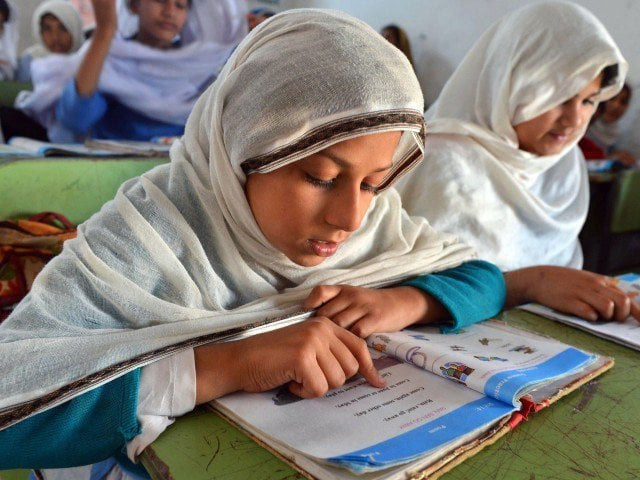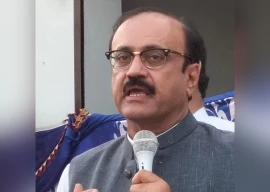
The Pakistan Economic Survey 2015-16, launched on Thursday, had some encouraging figures besides the increase in the literacy rate, while the net enrolment rate at primary level has been stagnant for the last two fiscal years.
Pakistan has world's weakest higher education system, say QS rankings
Literacy rate
The male literacy rate for FY 2015-16 was 70%, while over half of women cannot read and write a basic document, as female literacy was listed at 49% --- 21% lower than men.
The provincial breakdown suggests that Punjab leads with a 63% literacy rate, followed by Sindh with 60%, Khyber-Pakhtunkhwa with 53%, and Balochistan with 44%.
Last year, Punjab led with 61%, followed by Sindh with 56%, K-P at 53%, and Balochistan at 43%.

K-P is the only province where the literacy rate was unchanged.
Urban-rural divide
The urban-rural divide remains ever-present in literacy rates. The data shows that the literacy rate is higher in urban areas, at 76% than in rural areas’ 51%. In 2014-15, the figures were 74% percent in urban areas and 49% in rural areas.
Literacy rate remains stagnant at 60%
The highest divide has been witnessed in Balochistan, where urban literacy was 61%, and rural literacy was just 38%.
Gender gap
Punjab has the lowest gender disparity, with 71% of men and 55% of women listed as being literate. In Sindh, the literacy rates are 70% for men and 49% for women, while in K-P, 71% of males are literate, but just 35% of women meet the criteria. In Balochistan 61% of males and a paltry 25% of women are literate.
Enrolment
The national net enrolment rate (NER) at primary school level was unchanged from last year, standing at 57%. The provincial breakdown shows that Punjab’s NER fell to 61% in 2015 from 64% a year earlier. Sindh’s NER rose slightly to 51 % in 2015, and the NER in K-P also went up, rising to 56% in 2015 as compared to 54% in 2014.
Balochistan saw the most significant increase, rising from 39% in 2014 to 46% in 2015.
Published in The Express Tribune, June 3rd, 2016.


















COMMENTS
Comments are moderated and generally will be posted if they are on-topic and not abusive.
For more information, please see our Comments FAQ